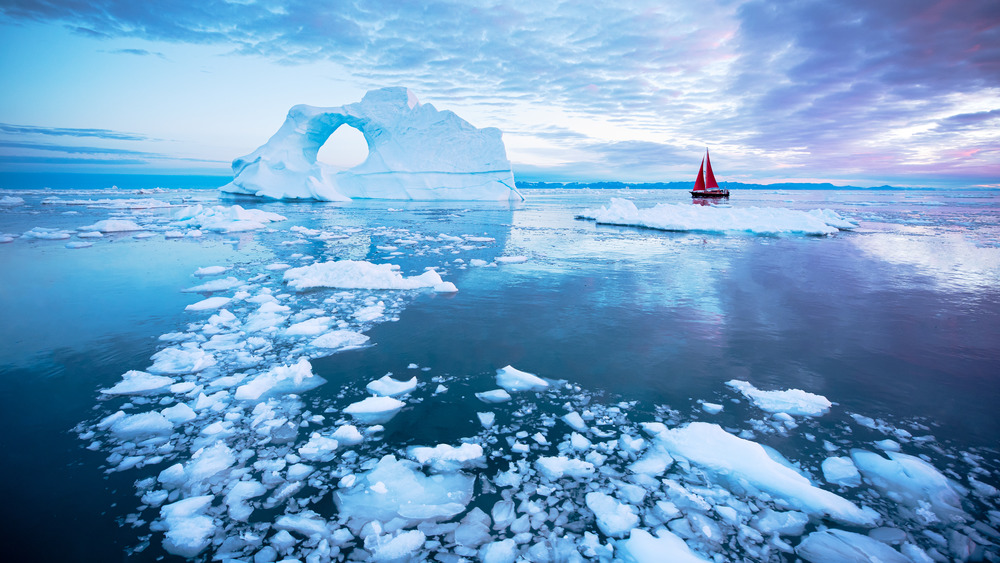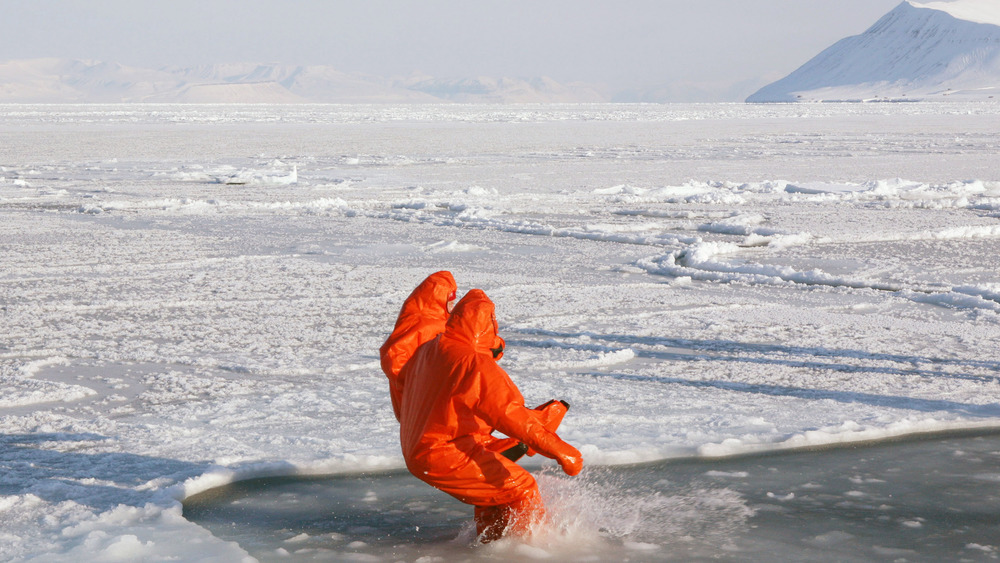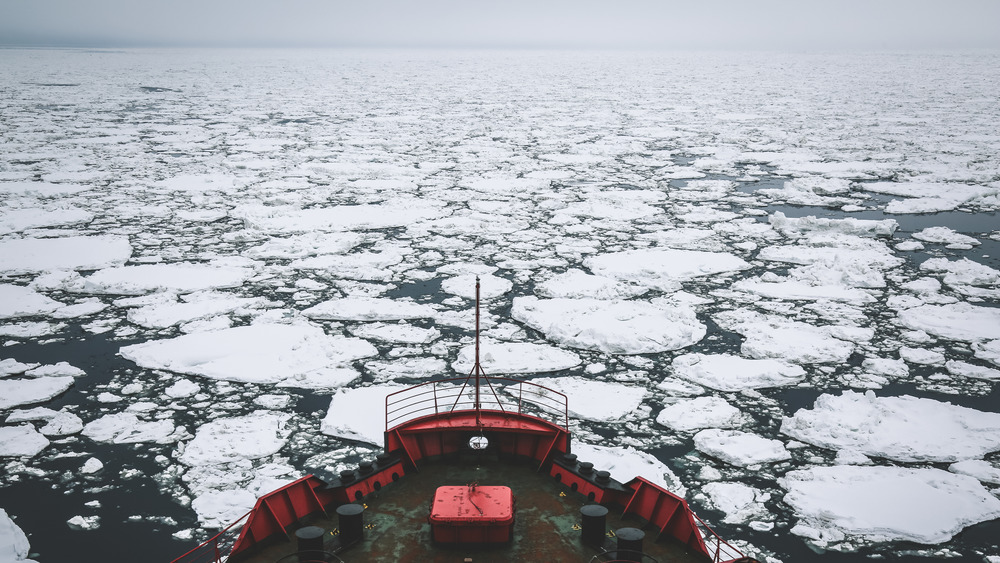The Biggest Danger At The North Pole May Surprise You
The North Pole, where Santa lives, can be a beautiful place. It offers magnificent views of auroras and access to research stations. Plus, it isn't even that cold. Nevertheless, the North Pole can be a dangerous spot. That danger lies not in its climate or wild animals (and yes, they can be a safety issue); the most dangerous thing at the North Pole is the ice.
Adventurer Tom Avery told National Geographic that the moment you step onto the ice, "the place is trying to kill you." Avery explained there are great big walls of ice called pressure ridges that guard the way to the North Pole.
Walking around isn't easy either — ice can get treacherously slippery. Avery said there are open water areas in the middle of an ice shelf where cracks in the ice appear. And since it gets dark fairly early, the area gets only a few hours of daylight. Reduced visibility makes it tricky to navigate these open areas. (Also, polar bears.)
While the North Pole, or at least the Arctic Ocean, is covered in a large sheet of ice year-round, LiveScience pointed out the ice shifts depending on the season. In the summer, about half of the ice pack disappears and melts. It grows back to the size of the entire United States when it gets cold again in the winter. So when traveling to the North Pole, it's essential to take the seasons into account to maximize the amount of solid surface.
The North Pole is on thin ice
The North Pole is extremely sensitive to climate change – after all, the area is literally made up of ice. As such, warming of the planet's climate causes the large sheets of ice that make up much of the North Pole to react. It cracks and melts in larger proportions.
National Geographic wrote that many explorers are concerned that changes in Arctic ice might mean the end of unsupported expeditions, voyages solely dependent on human power. Adventurers doing this kind of journey will ski, snowshoe, or sled to the North Pole, carrying all of their supplies, with no replacements via airlift. Nor do they use dogs to pull their sleds. They cross over mounds of ice bigger than houses while carrying 300 pounds of supplies, and have to swim across water as cold as 30 degrees. But, because of climate change, Arctic ice is thinning, making it far more dangerous for unsupported expeditions.
The explorers noted the number of unsupported expeditions had dropped significantly because of increased danger. They said the thinning of ice makes it more challenging to navigate. When ice sheets break up, as they usually do, they will drift south, towards Canada. But thinner ice is more susceptible to wind and is carried in unpredictable directions, throwing them off course. Camping on the thinner ice is more dangerous, too because it can crack underneath their tents.
Melting, thinning ice also means more open water to cross, and that's one of the more dangerous parts of crossing to the North Pole.
More melting is expected
Warming at the North Pole means the window when explorers and researchers can travel there is shorter. For adventurers, it's far more dangerous to travel in warmer months of the ice melt. According to the National Snow and Ice Data Center, the Arctic's melting season has become longer than normal. The ice no longer has a chance to recover during the cold period. This delayed cold season means the ice is already pretty weak by the time the weather warms up, and it cracks much faster. The situation is pretty dire. As The Guardian reported, scientists predict the entire Arctic will be ice-free by 2050.
And it isn't just the ice that makes the North Pole dangerous. The wind isn't fun to deal with, either. Strong winds don't just move blocks of ice across the water; they also bring blinding conditions at times, challenging travelers even further. The air in the North Pole is very dry, which brings about dehydration much faster. The only shelter available is your tent, precariously staked on thinning ice.
Despite dangerous conditions, the North Pole is essential to many scientists. It offers the best way to study the effects of climate on the planet, along with other important scientific research on organisms. Sure, the ice may try to kill you, but we have to save it. Maybe plan ahead. Think about how you'll get across more and more frigid, open water.


